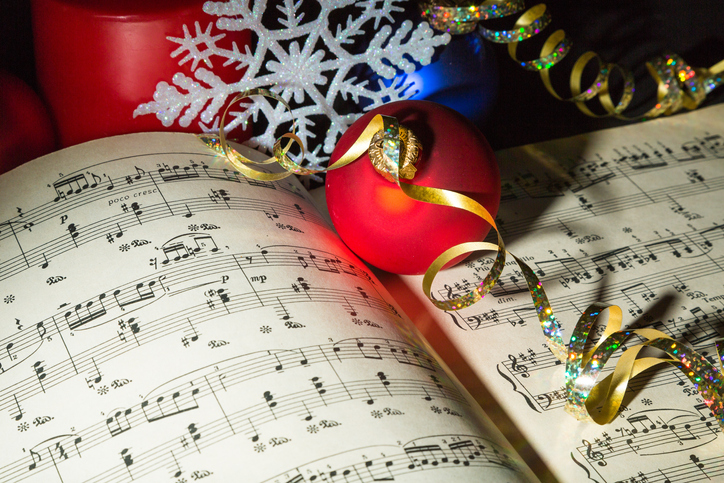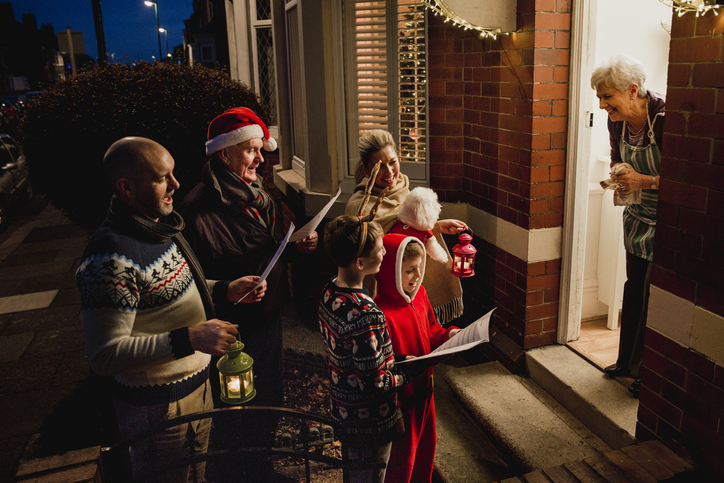Is it really Christmas without Christmas music too? And I’m not talking Mariah Carey’s “All I Want for Christmas Is You”. I’m talking about good ol’ fashioned Christmas carols.
Growing up, I remember having a book of all the Christmas carols that I would learn to play on the piano. But because I grew up in southern California, traveling around door to door singing carols was not a thing.
I have always wondered where certain Christmas carols came from (who composed them and how did they get so popular?). So I decided to do a little research.
1. Silent Night
This one’s probably the most well-known carol of them all. In 1816, an Austrian priest wrote the poem “Stille Nacht! Heilige Nacht!” You can probably guess what that translates to.
A couple years later, he asked a friend to write accompanying music for the poem. They performed the song with a choir on Christmas Eve in 1818. The song was translated into English almost 40 years later.
2. Santa Claus is Coming To Town
This song was written and composed by James Gillespie. Gillespie was a vaudevillian-turned-songwriter who was going through tough times, personally and financially, after the passing of his brother.
He had gotten a call from a radio show host named Eddie Cantor to write a Christmas tune. He initially rejected the job because of what he was going through. But soon became inspired by childhood Christmas memories and wrote the song.
It debuted on the radio show for the first time in 1934.
3. Hark! The Herald Angels Sing
The earliest recorded version of this song was a poem written in 1739 by Charles Wesley, brother of John Wesley, the founder of Methodism. It was originally meant to be a slow, hymnal song.
But the more upbeat tune we know today was composed by William H. Cummings almost 100 years after the poem was written.

4. Deck The Halls
This one goes all the way back to 16th century Wales where the lyrics were slightly different back then. The “makeover” was done by Scottish folk music in the 1800s.
Lines like “Oh! how soft my fair one’s bosom/ Fa la la la la la la la la,” were transformed into Yuletide wishes like “Deck the halls with boughs of holly/ Fa la la la la la la la la.” Or “Fill the meadcup, drain the barrel,” have been swapped for “Don we now our gay apparel.”
5. Good King Wenceslas
John Mason Neale from England was the first to write the lyrics to this unconventional carol in 1853. It’s about the journey of a kind man who set out to help his poor neighbors on Saint Stephen’s Day, even though the weather was terrible.
In fact, this man was real. He was Wenceslaus I, Duke of Bohemia who ruled in the 900’s. He was slain by his own brother, Boleslav the Cruel. His acts of charity granted him sainthood later in life, and he is the patron saint of the Czech Republic.
6. Jingle Bells
This is one of the more rare carols that is not religious based. Written by James Lord Pierpont in the 1850s in Georgia, it was actually meant to celebrate Thanksgiving. It was called “The One Horse Open Sleigh”.
It was renamed in 1857 when the lyrics were published. It made history on December 16, 1965 when it was the first song to be broadcast in space by the crew of Gemini 6
7. O Little Town of Bethlehem
This religious carol, written by Phillip Brooks, tells the tale of the birth of Jesus, and was inspired by a pilgrim’s moving Christmas Eve experience in the Holy Lands.
In 1865, Brooks rode on horseback from Jerusalem to Bethlehem, where he participated in the Church of the Nativity’s five-hour long Christmas Eve celebration, complete with hymns.
Returning home, this experience proved so profound that he channeled it into the song sung in churches to this day. Its first public performance was held three years later, performed by the children’s choir of his church on December 27.
